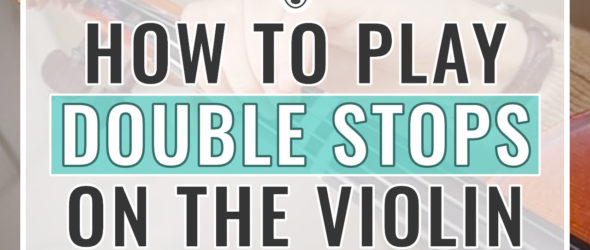A one-stop guide to playing violin double stops with control and ease.
Composers incorporate double stops to add depth and mix melody and harmony. In fact, if you’ve ever tuned your violin by checking two strings together, then you’ve actually already played a double stop!
Double stops can be tricky and frustrating. With a few tips from this article, you’ll be ready to include them quickly in your daily practice. And, when it comes to practice, make sure to download your copy of the Preparatory Exercises by Sevcik and my free double stops booklet:
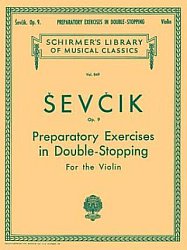
Sevcik – Op. 9 Preparatory Exercises in Double-Stopping

Violin Double Stops
Charts and Exercises
Free Sheet Music
Examples of Double Stops in Violin Repertoire
Let’s have a look at some examples. Bach is a great composer who liked to write them in his pieces.
You can listen here to how violinist James Ehnes smoothly navigates the double stops in Bach’s Violin Sonata No. 2: III. Andante:
Fiddle music also uses double stops a lot. Here is an example from traditional Irish fiddle music:
What Are Double Stops?
Double stops are an extended left-hand technique where you play two notes from two strings at the same time. There are four different kinds: two open strings, open string with fingered notes on the string below, open string with fingered notes on the string above, and both notes fingered on adjacent strings.
Types of Double Stops
Now, let’s have a look at the four types of double stops and their notation in the sheet music.
1. Two open strings
You can play open A and D strings together to get the easiest violin double stop.
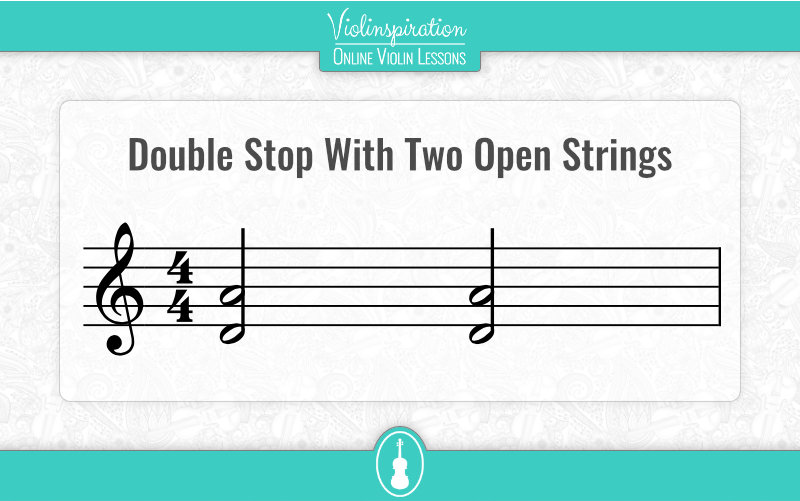
2. Upper note fingered with an open string below
We play it by putting e.g. the first finger down on the A string and playing it together with an open D string.
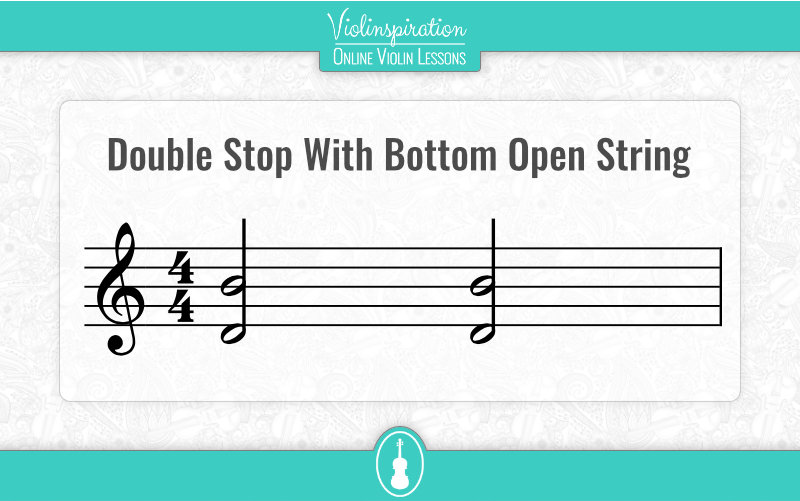
3. Lower note fingered with an open string above
This double stop is played by putting e.g. the second finger down on the A string and playing it together with an open E string.
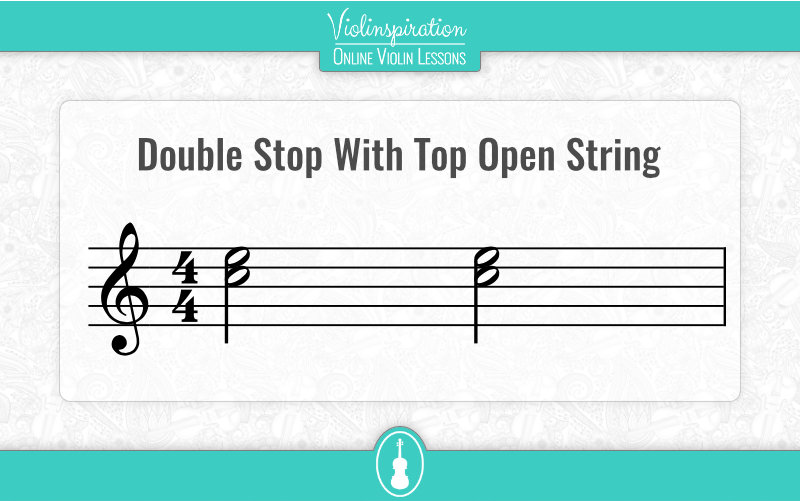
4. Both notes fingered on adjacent strings
This type of double stop is played by putting e.g. the first finger down on the D string and the third finger on the G string.
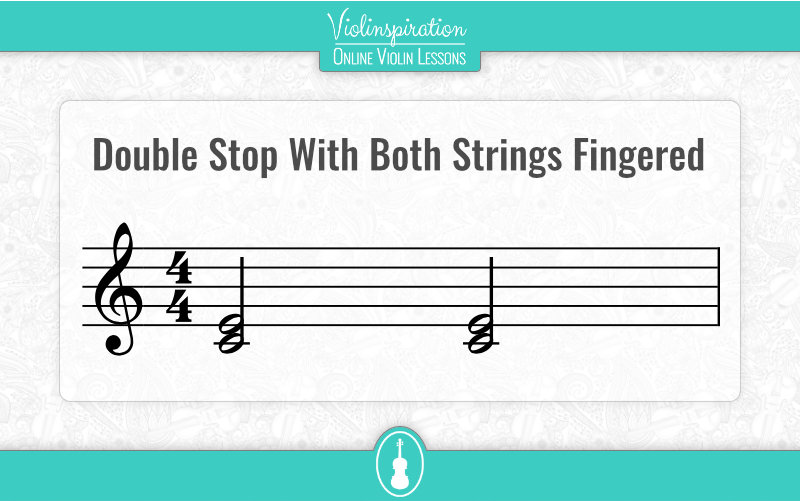
These four different combinations create intervals that need to be finely tuned. Double stops will often require you to wiggle your fingers around to tune the intervals until it sounds right.
Why is it Called Double Stop?
They’re called double stops because you are playing two notes at once. On a technical level, a ‘stop’ is a term for fretting the strings. You are stopping the vibration of the open string with your left hand. So when you do this on two strings at the same time, you are ‘doubling’ the ‘stop,’ hence the term: double stop.
For violinists, this requires perfectly capturing both strings with the bow at once.
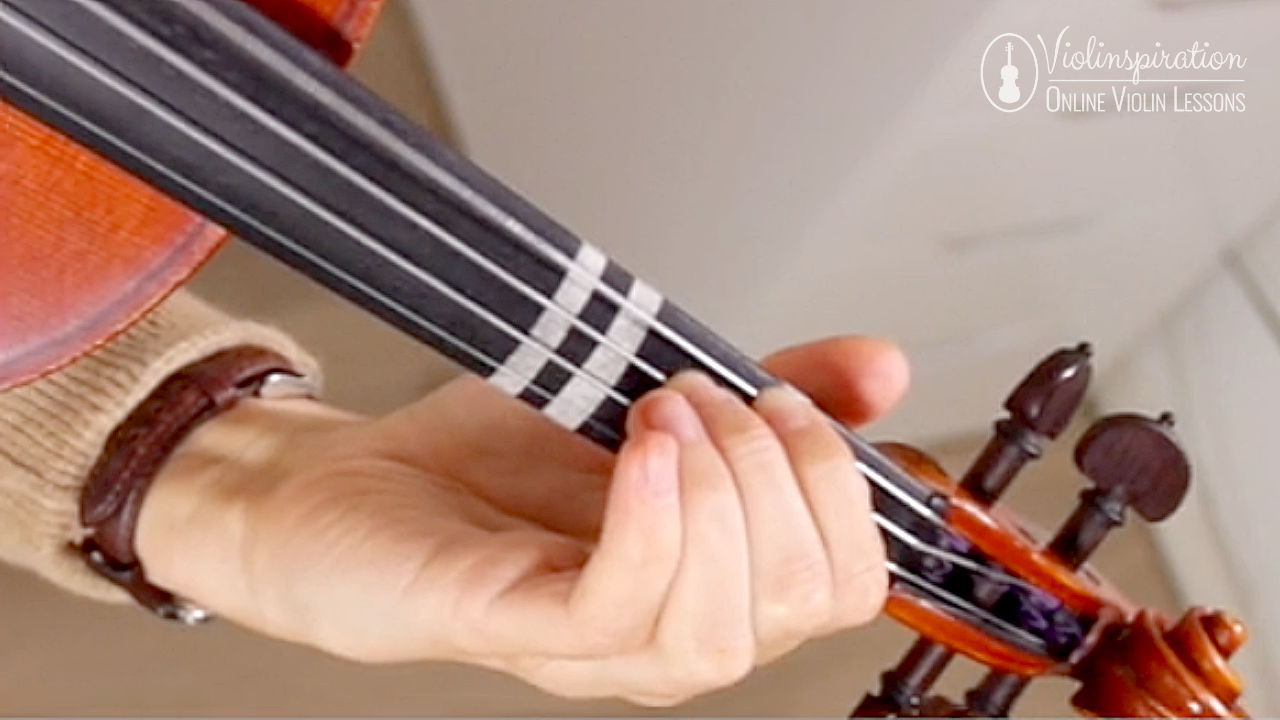
Are Double Stops Chords?
Double stops are not chords. Technically chords mean you’re sounding more than one note at once, but chords need three notes to create a triad. Just two can often suggest a chord, but many theorists argue that a double stop is not a chord on its own.
Triple and Quadruple Stops on the Violin
Three or four notes do make up a chord though! Since violins have four strings, violinists can make triple and quadruple stops by playing three or four notes at once. For a triple stop, you’ll want the bow even closer to the fingerboard. Block the fingering by putting your fingers all down at once.
For quadruple stops, you’ll likely break the sound into two double stops back-to-back. Play the bottom double stop and quickly roll the bow to the next double stop. The more fingers you have down on the fingerboard, the more you want to relax.
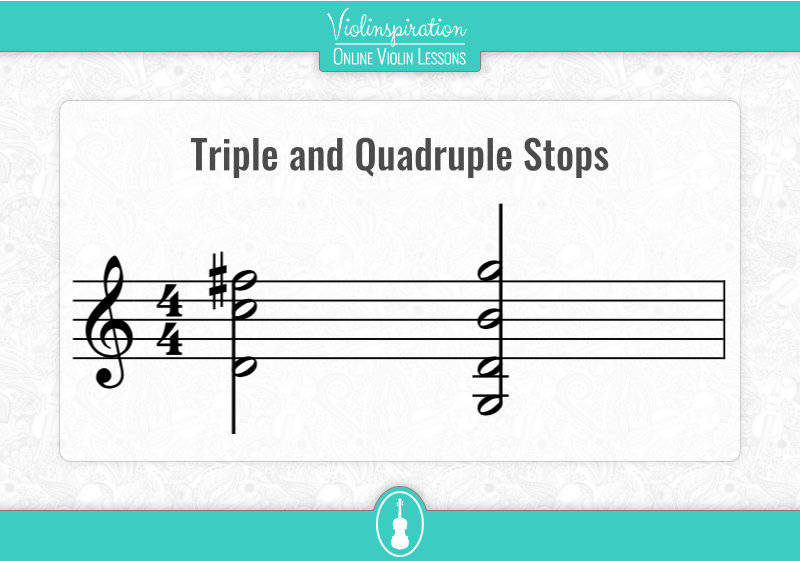
How to Play Double Stops
Play a double stop by stroking with the bow two adjacent strings at the same time. You can use two open strings, place one of your fingers on just one of the two adjacent strings, or place your fingers on both strings.
Playing multiple notes at once can be tricky so if you’re feeling stuck, don’t worry! The biggest thing to remember is not to squeeze. Often, I see students get tense, only making adjusting more difficult.
Now, take your violin and try to play each of the four types of a double stop:
Two Open Strings
Let’s take open A and D, for example. Start by placing the bow close to the fingerboard. With flat hair, pull the bow smoothly. It’s important to keep a light bow, as heavy pressure can distort the pitch. You are aiming to hear the natural vibrations together. If your violin is in tune, you’ll get a resonant perfect fifth with a beautiful tone. An exercise here is playing the A string until the halfway point and then tilting the bow to also catch the D string.

Upper Note Fingered With an Open String Below
Let’s play an interval of a sixth by putting down your first finger on the A string and playing it together with an open D, for example. Imagine you are playing a B natural and you’re tilting your bow to also teeter on the D string. The intonation might be difficult and you may need to wiggle your finger to get it to sound in tune.

Lower Note Fingered With an Open String Above
Put your second finger on the A string (C natural) while playing open E. This minor third interval should sound open and resonant. Start by getting the C in tune and then tilt the hair down to even the hair out between the adjacent strings.

Both Notes Fingered on Adjacent Strings
One example is creating a major third with two fingers down. Put your first finger down on the A string and your third finger on the D string. Try to keep a relaxed, first-position hand frame. Play each note separately first. You might need to search around by moving your finger, wrist, or even elbow around until it is in tune.
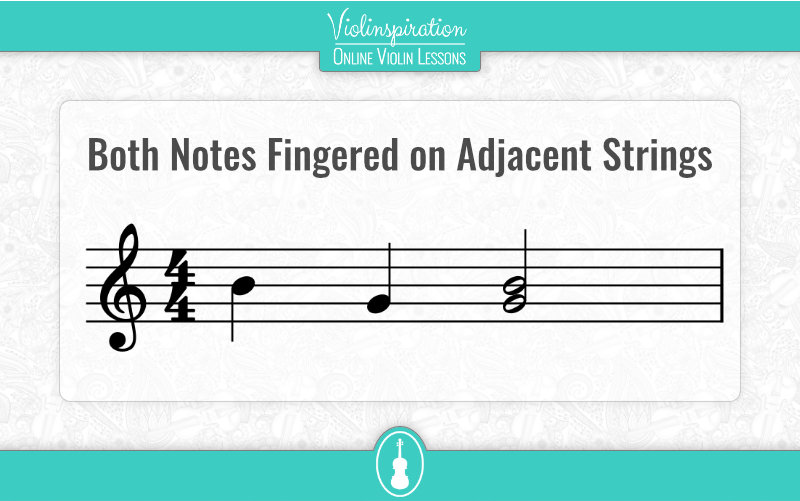
Now you can add practicing double stops to your daily practice routine.
JVA members only: here are links to the Academy resources for practicing double stops:
- Improver level 4 with an introduction to double stops, basic exercises and your first double stop piece (among others)
- Improver level 5 with a study on both fingered double stops
Eight Tips for Mastering Double Stops
1. Be Patient
A double stop can be intimidating but the more you panic the tenser you will be. Being able to adjust quickly is key!
2. Play Open Strings Alone
A good exercise for the right hand is to play just A and D strings, for example, together a lot. It takes time to adjust from playing just one note to multiple at the same time. You’ll need a good sense of right-hand control so both strings are equally voiced. Practice getting the ideal, round sound here.
3. Sound One String at a Time
Practice the fingering for fingered ones by keeping your hand position quiet, while only playing one sound at a time. Put both fingers down at the same time even though you’re only listening to one. Once you are comfortable with each note, combine them slowly.
4. Keep Left Thumb as Relaxed as Possible
If you notice any squeezing, tap your thumb on the fingerboard to let out tension. See if playing one note at a time decreases tension.
5. Play More Fiddle Music!
Find music that includes lots of double stops, like Irish fiddle jigs! Fiddle music often uses open strings along the melody to make it extra-musical.
6. Practice More Scales
Exercises from your scale book will help strengthen your fingers. They will also increase finger location precision. Thirds, sixths, octaves, and tenths are especially helpful.
7. Train Your Brain to Recognize Intervals
The more familiarity you have with the distance between two notes, the more your hand frame will understand how the fingers are related.
8. Supplement With Additional Exercise Books
A great exercise book is Sevcik’s Op. 9, “Preparatory Exercises in Double-Stopping.” These exercises encourage finger independence within the hand frame. Many of the exercises also focus on each note before combining them.

Sevcik – Op. 9 Preparatory Exercises in Double-Stopping
The next resource I recommend for you is my free double-stop booklet with all double stops in the first position so you can easily try out this technique and learn various intervals along the way. Download the booklet over here:

Violin Double Stops
Charts and Exercises
Free Sheet Music
If you are a member of Julia’s Violin Academy, make sure to submit your video here to get feedback on your double stops.
